“Society of the Snow”, now streaming on Netflix, premiered at the 2023 Venice Film Festival, half a century after the plane crash it reconstructed. Based on a true story of a 1972 accident in the Andes, and on the namesake book (“Society of the Snow: The Definitive Account of the World’s Greatest Survival Story” by Pablo Vierci), the movie follows the passengers of the Air Force Flight 571, a rugby team facing the ultimate life match against an unforgiving mountain. “Society of the Snow” was welcomed with great reviews, awards, and award nominations, but what can we learn from the real events behind this survival thriller? How did they survive?
Filmed in Spanish, the original language of the survivors of the Society of the Snow (or “La sociedad de la nieve”), with a talented young cast from Uruguay and Argentina, J.A. Bayona‘s movie manages to bring a relatable authenticity. With convincing visual effects, the viewers are drawn into a raw struggle to stay alive (“Alive” was also the title of the 1993 harrowing drama, starring Ethan Hawke).
“Society of the Snow” is an intense and gripping movie but also a repository of invaluable survival lessons
The Andes mountain plane crash of 1972 was not an ordinary accident if we can even speak about accidents in that way. Out of 45 passengers aboard Uruguayan Flight 571, 16 managed to survive. To do that, they had to endure more challenges than just the bone-chilling cold of the hostile snow-covered mountain, or abandonment by the rescue teams. They were fighting for their lives, confronting extreme threats, and devising extreme solutions.
“Society of the Snow” is an intense and gripping movie but also a repository of invaluable survival lessons. While I sincerely hope you never find yourself in a situation where you need to apply them, some of the strategies are worth reading about, just in case.
Learn the survival tactics employed by the Society of the Snow!
This article may contain spoilers. If you have a Netflix subscription, I suggest you first watch "Society of the Snow", the full movie, and then come back to reflect on these survival strategies.
Society of the Snow – survival guide in 9 lessons
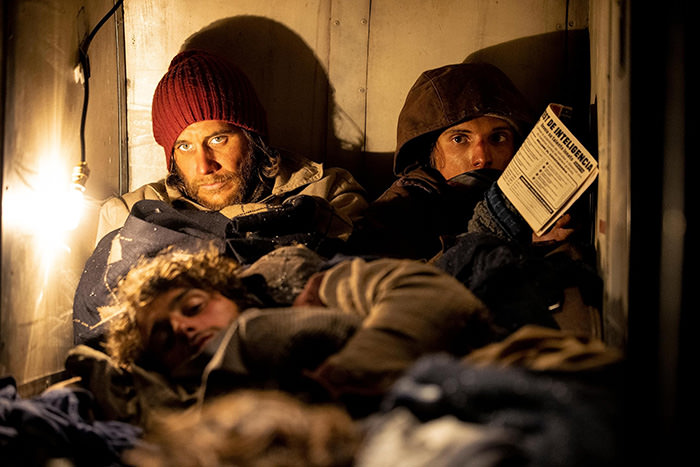
1. Freezing temperatures
Threat
The high-altitude Andes region subjected the Society of the Snow survivors to freezing temperatures, increasing the risk of hypothermia and frostbite.
The plane crash that happened on Friday the 13th, of October 1972, occurred at an altitude of 3,500 meters.
How cold was it in the Andes when the plane crashed? The Society of the Snow had to endure a frigid nightmare, battling temperatures that plummeted to a teeth-chattering 35°C below zero. With frost in their hair, and ice clung to their clothes, the survivors would shiver, sometimes so much that it was impossible to even talk.
With no coats and blankets, frigid temperatures were the most dangerous aspect of the Andes plane crash. Exposed to this extreme cold, some of those who survived the initial impact succumbed to frostbite.
What was supposed to be a light spring weekend escapade turned into a 72-day struggle for survival in the harshest weather conditions of the highest mountain in South America.
Solution
The survivors used the plane wreckage and available materials to create a makeshift shelter. They did everything in their power to conserve body heat, even if it meant urinating on one’s hands to defrost them.
To avoid direct exposure to the ruthless elements, they constructed a temporary home out of the fuselage, fortifying it with an improvised wall crafted from suitcases, seats, and aircraft debris. They patched the holes with snow and pieces of clothes. Still, the shield against the biting cold was far from perfect.
Seat covers and clothing salvaged from suitcases became their “bedspread”. Yet, it was their close huddling as they shared body heat, or even relying on the warmth of another’s breath, that served as a strategy against the relentless freeze.
Moving is the body’s first line of defense against extreme cold (hence shivering). When weather permitted, Andes plane crash survivors would keep active outside, which would generate body heat, a crucial protection against purple limbs. But when stuck in the shelter, they would punch each other’s arms, hoping to stimulate circulation and defy numbness.
If you ever end up in a situation where you need to evacuate after a plane crash, remember that you should always leave your baggage behind!
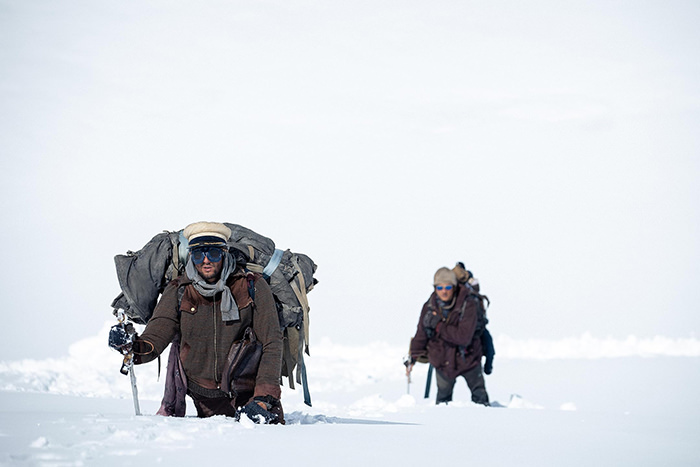
2. Sun exposure
Threat
Intense sunlight at high altitudes increased the risk of sunburn. The blistering force of the sun was reflecting off the pristine white landscape, posing a dual threat. Not only did it scorch their skin, but it also had the potential to damage survivors’ eyesight. Prolonged exposure to such sunlight could lead to snow blindness.
Solution
As we can see in the movie, but also in the Society of the Snow actual pictures, survivors improvised protective eyewear as their own version of sunglasses. They tried to limit exposure during peak sunlight hours.
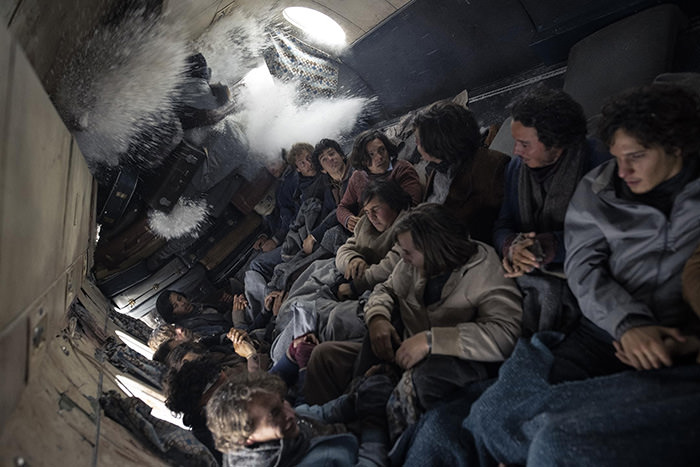
3. Avalanches and blizzards
Threat
The mountainous terrain concealed a peril – a constant risk of avalanches that could bury survivors and further complicate their chances of being found by the rescue teams.
Besides being stranded in an extremely cold pocket of the Andes, the Society of the Snow plane crash scene was in the location with heavy snowfall and raging blizzards. One could fall hip-deep in the snow, while the howling winds were stealing the breath from their lips.
On day 17, the snow built up so much that it triggered two avalanches, essentially burying everyone inside the plane, filling half of it with snow, and blocking the air supply.
The shelter that was providing a sense of security suddenly became a tomb. Eight lives were claimed that night.
Solution
Choosing a strategic location for a shelter in such a disaster is crucial, especially in avalanche-prone areas. But with no alternative hideout besides the plane itself, it was the awareness of the surroundings that saved lives on Flight 571.
The dramatized version may have skipped some details, but the sound of thunder awoke one survivor. Had he not stood up before the avalanche hit, it could have been a tragic end for everyone. With only a meter of space left beneath the ceiling, he started digging in the darkness, pulling out others who were sleeping on the floor when the snow filled the cabin.
Some survivors, such as Javier Methol, had to make hard decisions. With his feet touching the chest of his wife Liliana Navarro, he knew that freeing himself from the snow would come at the cost of pressing her down, under the suffocating weight of the snow. By the time they dug her out, she was gone.
To bring fresh air into the cabin, survivors used a metal pole to make a hole through the cockpit windscreen. Blizzard persisted. Hours stretched into days as they tried to claw their way out. Altogether, they spent four days trapped inside the plane-coffin, next to the lifeless bodies of friends and family.
Even if Andes plane crash proves that every rule has an exception, sitting in the back of the plane is still one of the safest choices you can make as a passenger.
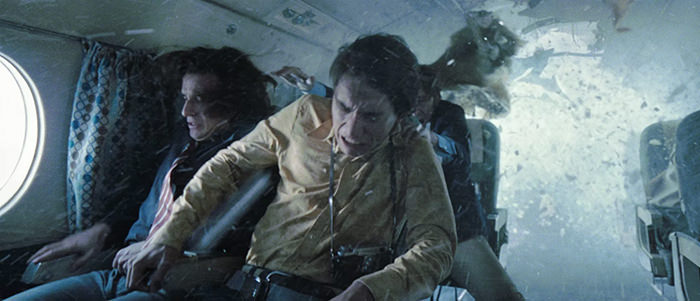
4. Injuries
Threat
The initial plane crash took twelve lives immediately. But for others in the Society of the Snow, it meant serious injuries, ranging from broken bones to open wounds.
When the plane crashed and slid down the mountain, the abrupt halt created a momentum in which all the seats hurtled forward, crushing passengers in their path.
The resulting severe physical traumas combined with frostbite, miles away from a hospital or any professional medical help, were a true test of survivors’ resilience.
Solution
Without access to conventional medical resources, survivors had to improvise. Luckily, in the group of amateur rugby players, there were also several medical students, who used their knowledge to help.
Fernándo Vázquez studied at the Faculty of Medicine, but he tragically bled to death just after the plane crash. His friends and colleagues Roberto Canessa and Gustavo Zerbino became the Society of the Snow medical team. They turned available materials into splints, bandaged the wounds with strips of clothing, cleaned back sores, used snow to cool wounds and stave off infections, and performed rudimentary operations and other first aid measures. Their resourcefulness was a lifeline for the others.
Fernando Parrado sustained a severe head injury during the plane crash. Presumed dead, he was left outside in the snow, without water for days. It turned out to be a stroke of luck. As scientists later explained, these conditions stopped the head swelling that would have sealed his fate. Diego Storm, another medical student, was the one who recognized that Nando was actually in a coma, and not dead.
A 62-year-old Canadian embarked on a sailing trip around the 5 great capes, alone, and without the standard navigational help. Meet Bert terHart, a man who was injured during his voyage around the world, but still knew that giving up was not an option.
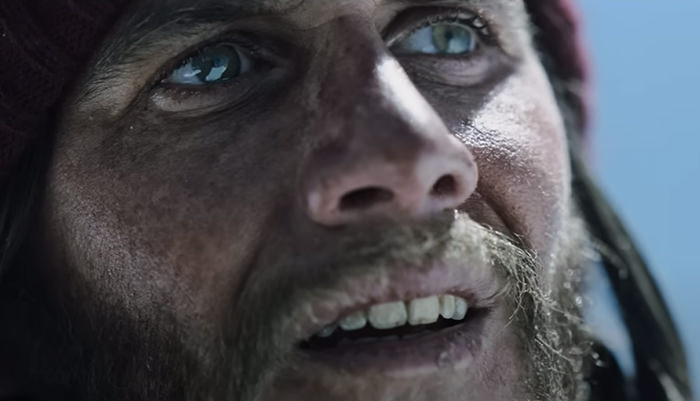
5. Dehydration
Threat
With limited access to clean water sources, the Society of the Snow had an increased risk of dehydration and waterborne diseases.
One would think that, being stuck in such a desolate landscape with nothing but snow around, the water supply would be the least of the survivors’ worries. But the altitude intensified their thirst to hardly bearable levels. The path to dehydration was five times quicker than it would be at sea level.
The visual reminder of their plight appeared when nature’s call met the pure whiteness of the snow, revealing an ominous sight – black pee, an unmistakable symptom of severe dehydration.
Solution
Survivors melted snow for drinking water, carefully managing their water supply. This resourcefulness in obtaining and conserving water played a vital role in their survival.
At first, they drank what they could find in the aircraft – mainly some alcohol. But wine and liquor are the best way toward, not away from, dehydration.
They tried eating snow. However, they quickly learned it burned their tongues and throats, leaving painful cracks on their lips. It was just too cold to consume.
Parrado, ever the protective brother, later explained that he melted snow in his own mouth, transferring precious water to his wounded sister.
Soon, they figured out how to melt the snow in the sun and collect water in bottles, achieving a temperature bearable for drinking.
Numerous things can go wrong when you hit the road. These are the seven dangers of travel I experienced during my journey, and hopefully, they are something to learn from.
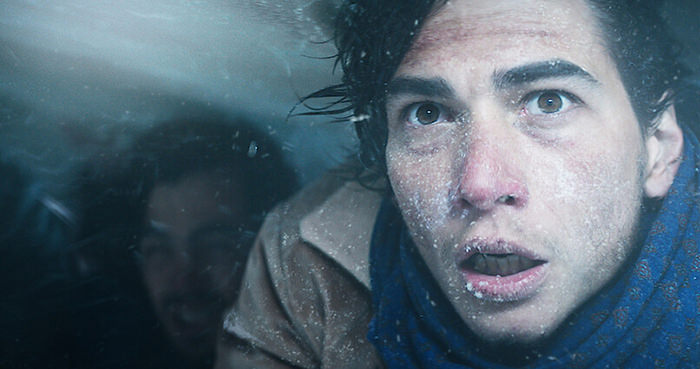
6. Hunger
Threat
Limited food supplies in the harsh environment of the plane crash site made starvation a significant threat to the survivors.
It didn’t take long for them to begin experiencing the pangs of hunger. Their bodies cannibalized their own muscle tissue for survival, leading to extreme weight loss and weakness.
At the altitude of the high Andes, the body craved more calories and burned them three to four times faster. So the more energy you invest in your survival, it becomes harder to compensate for it.
Malnutrition didn’t just cause running out of belt holes, but also scurvy. Such bodies were ill-equipped to combat wounds, injuries, and general sickness.
When survivors returned to the civilization, they couldn’t recognize their shadows in the mirror. Their weight was slashed in half. Once robust rugby players, Parrado had 55 kilograms, Canessa 44. These were the men who walked miles and miles to rescue their friends, equally resembling skeletons dressed in human skin.
Solution
Aware of their limited resources, passengers of Flight 571 carefully rationed their supplies. When those were exhausted, survivors turned to alternative sources of nourishment, making even life-altering decisions.
Initially, their diet consisted of food they found in the luggage. Aware of their difficult situation, they tried to extend their provisions while awaiting rescue. That could mean having meals that consisted of a cracker with some seafood or jam, a piece of chocolate, or other sweets. Parrado recounted that he was sucking on one chocolate-covered peanut for three days.
Within a week, conventional food was gone. Nothing lived in this part of the mountain, and any green-colored thing scratched off the rock looked edible. In this second starvation phase, survivors expanded their palate to some unusual choices, be it eating cigarettes, shoelaces, or even pieces of leather torn from suitcases.
Nando Parrado explains it in his 2006 memoir “Miracle in the Andes”: “Unless we wanted to eat the clothes we were wearing, there was nothing here but aluminum, plastic, ice, and rock.”
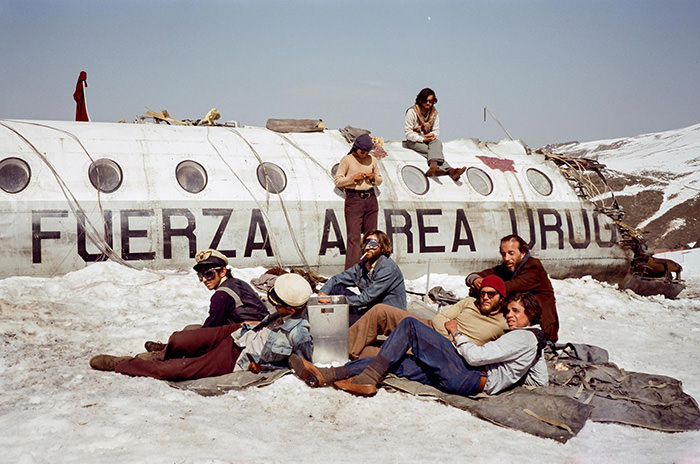
“Society of the Snow” opens the most controversial aspect of the Andes survival with one of the characters peeling a scab off, and eating it. With no alternatives, survivors had to make a difficult decision to – eat the dead. On day 9, the Strauch cousins used a piece of glass to cut the group’s first source of protein and fat in days.
Practical cannibalism was not an easy decision for survivors. It started with whispers and continued with long discussions about its legal and ethical implications. Could they face jail for eating someone without consent? Would their Roman Catholic church approve of consuming the meat from corpses? In the aftermath, the church actually called their survival-motivated act – justifiable.
Not everyone could swallow the idea of eating each other, but in the end, only those who overcame their reservations made it to the end. Pancho Delgado tried to convince Numa Turcatti to eat human flesh wrapped in snow, as it masks the experience. When he finally surrendered, Numa was chewing the meat as little as possible before swallowing it.
To relieve everyone from ethical dilemmas, the group made a collective pact to donate their bodies for the needs of others if they died. Before leaving on a trek toward the civilization, Parrado gave a permission to his comrades to eat his wife and sister.
Pushed to their limits and with no traditional food sources available, the Society of the Snow resorted to using common sense. Even if that meant breaking the taboo of eating meat from human ribs, it was this reliance on each other, in life and death, that saved them.
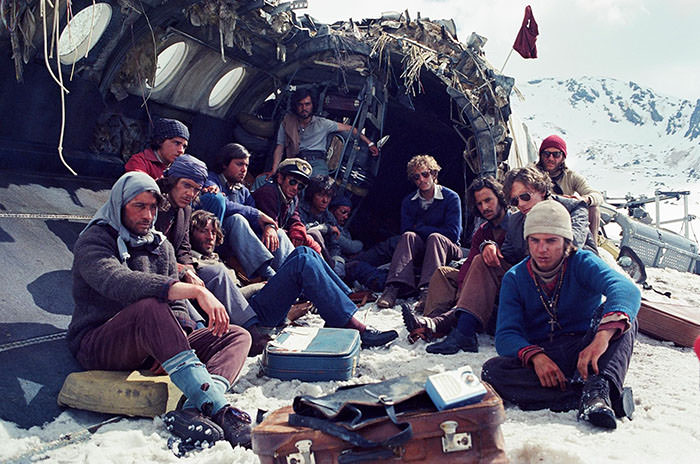
7. Isolation
Threat
Isolation from the outside world delayed rescue efforts, but the silence also came with fear and uncertainty that took a toll on the mental well-being of the survivors.
While exploring the crash site area on foot, and climbing the nearby peak in DIY snowshoes (fashioned from cushions tied with seat belts), they realized their white plane, camouflaged against the snow, remained invisible from above. The passing aircraft would never be able to spot them.
Being stranded in an unfamiliar, bare landscape, with no way to communicate with those who could save them, Society of the Snow was exposed to hard psychological strain.
Solution
Instead of falling into despair, survivors tried their best to determine their location and establish contact. They crafted makeshift signal devices from reflective materials, and an X-shaped formation made of suitcases, hoping to attract the attention of the rescue teams.
While speaking to the dying pilot, they tried to map their whereabouts and the ways to contact the world. From the pilot’s whisper, they learned they had passed Curicó (even if that information turned out to be inaccurate).
On day 11, they found a small transistor radio which brought devastating news: the rescue search was called off. The world didn’t believe someone would be able to survive the crash in such a climate for too long. The radio broadcast was a sobering reality check, forcing them to grapple with the stark truth that they were on their own. After the pessimism-inducing news, everyone accepted cannibalism.
On day 36, during their first attempt to descend the mountain, toward Argentina, they found the tail of the plane, with batteries they hoped to use for radio contact with the world. Even if their attempt was unsuccessful, not giving up allowed them to find a new stock of food, clothes, and tools for their second arduous trek.
The self-reliance showed importance in the final stage when, on day 71, the two who eventually descended the mountain on Chile’s side tried to pinpoint the location of the crash site on the map. The search party almost didn’t believe them that they walked for help all the way from Argentina, 60 kilometers away. Parrado’s determination was essential in convincing the rescue squad, while his sense of orientation unaided by navigation tools turned out crucial for guiding helicopters to his stranded comrades, practically forgotten after 72 days.
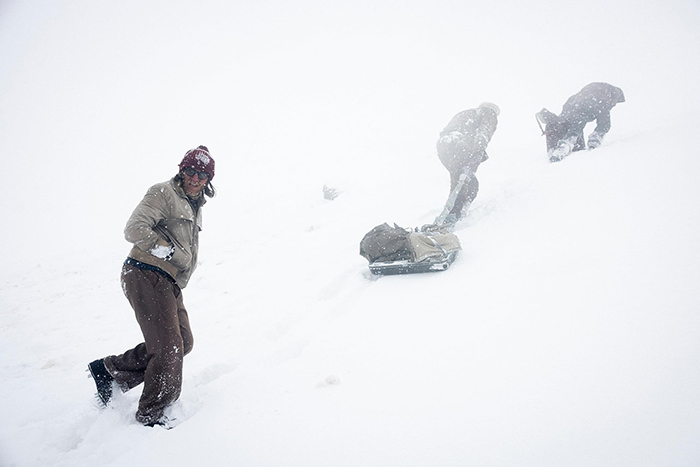
8. Physical exhaustion
Threat
The weather conditions and scarcity of resources contributed to physical fatigue. With each passing day, the Society of the Snow survivors were getting weaker, while the distance from civilization remained the same.
Solution
The injured ones prioritized rest and conserving energy. For others, maintaining physical fitness helped them endure the challenges.
When they learned help would not be sent in a live radio message, it was clear they would have to organize the rescue by themselves.
They waited for the weather to improve, and in the meantime, tried to prepare for the long trek, training for the walk daily, making walking sticks from aluminum poles, a sled from a suitcase, and a large sleeping bag from waterproof material they found in the wreckage.
The three hardiest rugby players, Nando Parrado, Roberto Canessa, and Antonio ‘Tintín’ Vizintín, left the crash site on day 61. Dressed in numerous layers of clothes, and with shopping bags over their socks, they hoped they would just climb the mountain to the west, and then descend to Chile from what they believed were the western limits of the Andes.
Ignoring the acclimatization, they undertook the climb from 3,570 to 4,600 meters too quickly. They exposed themselves to reduced oxygen levels, temperatures that were breaking water bottles, and altitude sickness that made their hearts want to jump out of their chests. On the summit, their spirit was nearly destroyed. The pilot was wrong. There was no sign of the green valleys of Chile. The unfathomable expanse of towering peaks was waiting in front of them, all the way to the horizon.
To extend the duration of their meat rations, they sent Tintín back to the camp, while the two continued on a grueling 10-day journey to civilization. This would have been a mountaineering feat even for a healthy individual. For these starved and exhausted survivors, it bordered on the impossible.
The pair walked 37 miles over ridges and peaks. Meeting a Chilean shepherd marked the beginning of the final rescue.
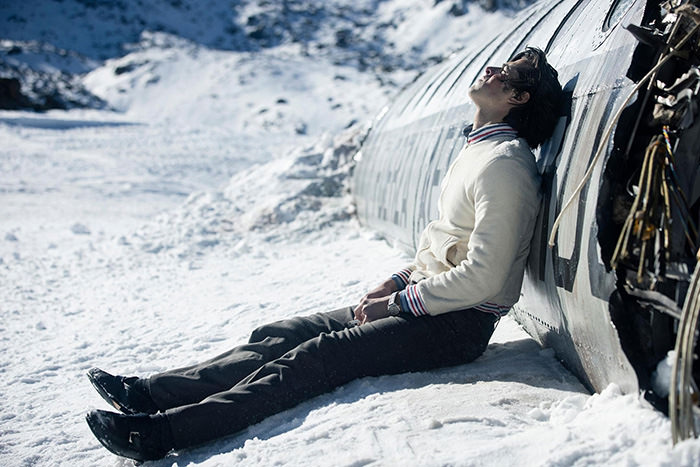
9. Emotional despair
Threat
Survivors of the Andes faced immense psychological stress and trauma as they grappled with their post-crash reality. These challenges could lead to emotional despair.
They had to deal with the loss of their friends and family members, the uncertainty of their fate, social conflicts, and the constant threat of death. This had to take a toll on their mental well-being.
Solution
Surviving in extreme conditions like the one Society of the Snow achieved is more than just a physical challenge. It takes mental resilience to go through such an extreme series of events and live to tell the story.
Survivors formed a tight-knit group, maintaining a sense of community, engaging themselves in sharing stories, exchanging whistles and rhymes, and even cracking jokes when the spirit was down. Their collective activities and mutual support to combat their psychological challenges fostered a collective will to survive, a sense of hope, and purpose.
Tapping into inner strength, pushing past our limits to keep going, and staying focused on goals is maybe the ultimate takeaway from this tragic 1972 flight, the one that reminds us that we can emerge from the emotional abyss stronger than before.
Books by and about the Society of the Snow survivors Many of the Society of the Snow real survivors became motivational speakers and even wrote books about their experiences. For further reading, check out these titles: 1. “Miracle in the Andes: 72 Days on the Mountain and My Long Trek Home” (Nando Parrado) 2. “I Had to Survive: How a Plane Crash in the Andes Inspired My Calling to Save Lives” (Roberto Canessa) 3. “After the Tenth Day” (Carlitos Páez) 4. “Out of the Silence: After the Crash” (Eduardo Strauch) 5. “Into the Mountains: The Extraordinary True Story of Survival in the Andes and its Aftermath” (Pedro Algorta) 6. “Memories of the Andes” (Coche Inciarte) Additionally, you can explore these book titles related to the Andes accident: 1. “On the Other Side of the Mountain: Memories and lessons from our sons who did not return from the Andes” (María del Carmen Perrier Pérez del Castillo) 2. “Alive: The Story of the Andes Survivors” (Piers Paul Read) 3. “To Play the Game: A History of Flight 571” (John Guiver)
Survival lessons of the Society of the Snow – Conclusion
We might never be in the life-or-death situation that a group of people had to face on that unfortunate Friday 13, 52 years ago.
Even when watching the “Society of the Show” movie from the edge of our seats, we’re taking a temporary visit to someone’s harsh reality from the warmth of our home comfort.
While being a touching tribute to those who survived and those who succumbed to the challenges of the 1972 Andes plane crash, the Netflix movie lets us reflect on how cultivating hope, prioritizing ratio over fate, and celebrating the power of unity can improve our chances.
After those incredible 72 days of 1972, reports called the survival saga of the Society of the Snow – a miracle
Passengers on Flight 571 are much more than just a documentary reminder that the human fight for survival can tap into an unknown potential, or even dig deep into “forbidden” topics that we prefer not to approach.
Real-life cannibalism that saved the final 16 from certain death serves as a potent metaphor. Collaboration breeds success. There is so much we can do for each other, and give to each other, despite what societal norms question or tell us.
The word ‘sacrifice’ originates from the words sacer (sacred) and facio (make). It is literally a sacred act of giving.
After those incredible 72 days of 1972, early reports called the survival saga of the Society of the Snow – a miracle. But there was no deus ex machina moment that saved the crash victims. Their salvation came from within.
When facing threats that put a question mark on our survival, we should not just wait for the generosity of the world or some divine intervention as a solution. It is our action, our readiness to do something for our fellow mates, and their readiness to do the same for us, that provides the path from darkest hours to clear exit.
Did you watch the “Society of the Snow”? What have you learned from one of the most challenging experiences in the history of plane crashes?
Share your opinion in the comments, and pin the article for later!
Disclosure: This post may contain affiliate links, meaning if you click on them and make a purchase, Pipeaway may make a small commission, at no additional cost to you. Thank you for supporting our work! Images in this article have been sourced through Netflix.

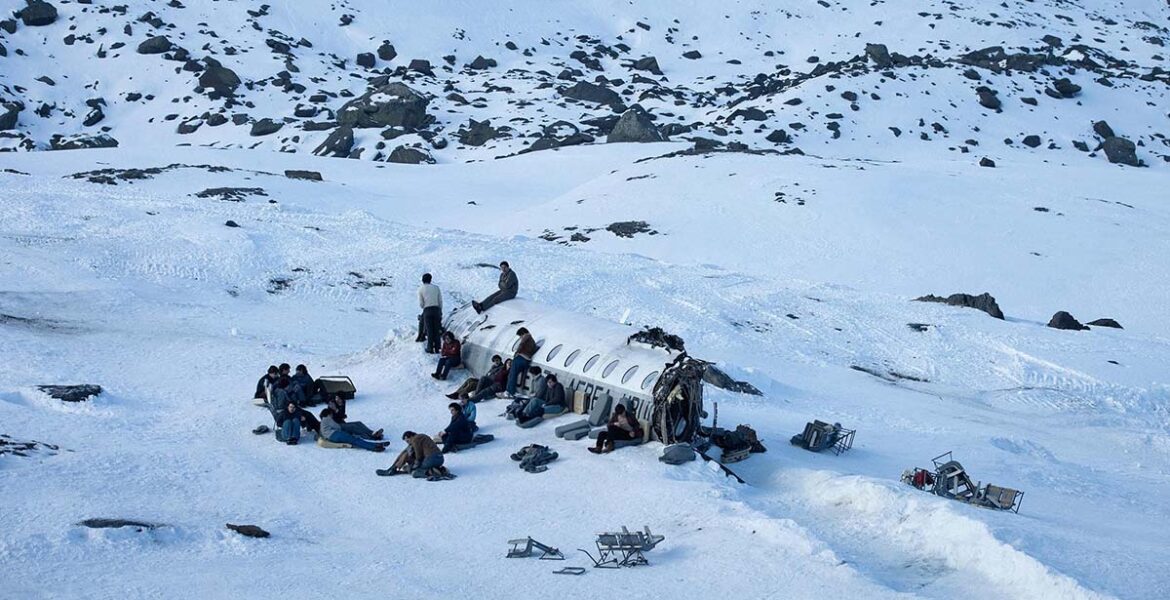
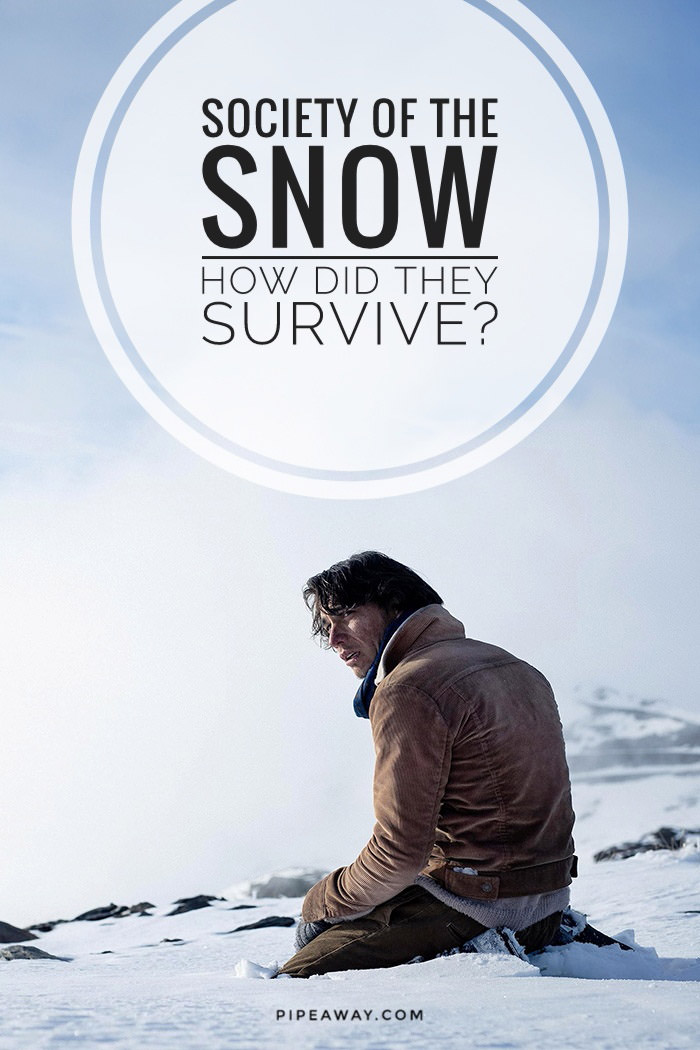
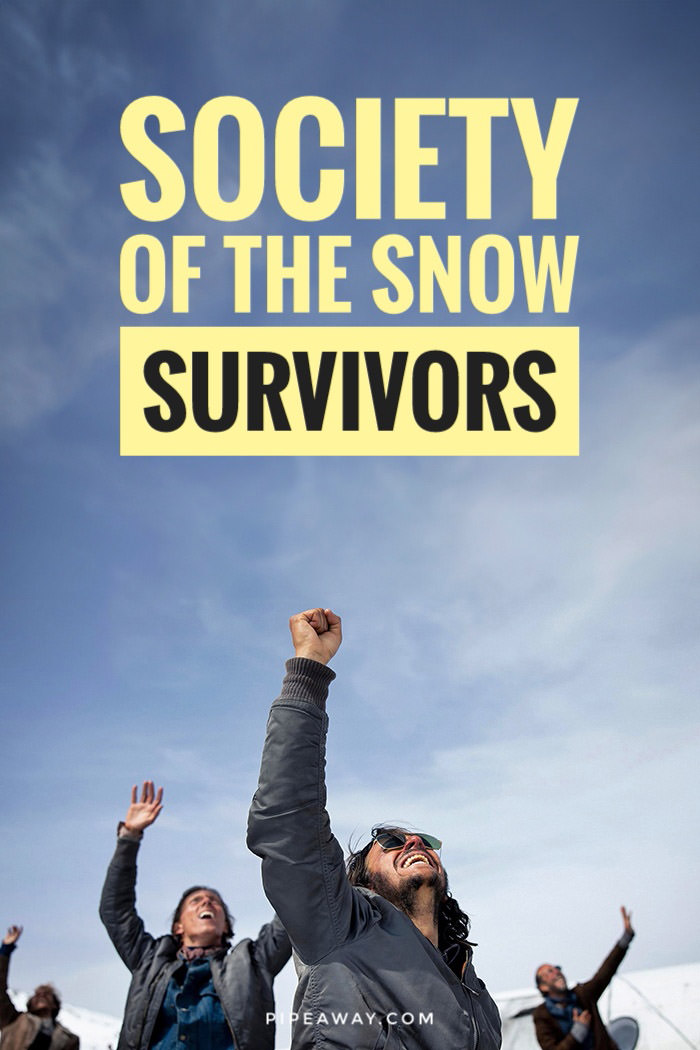

OMG, with the weather outside, I can definitely relate to the despair they must have felt at being cold. However, I can’t imagine having no relief for it in sight…. I can always go inside in my heating house..
Hey, Michelle!
Indeed, our daily comforts and challenges faced by the Society of the Snow survivors are in a stark contrast.
We often take our everyday luxuries for granted, don’t we?
And with temperature not even being the worst foe of the Society of the Snow, their struggle is truly unimaginable.
We can all watch “Survivor”-type TV games as quite popular chillout content, but true survival in remote wilderness is something else, one that’s hard to watch, and even harder to go through.
Always interesting learning about situation like this, because you think to yourself, “could I do it?” I guess you really don’t know the answer until you are faced with it.
Absolutely, Apryl!
“Society of the Snow” is thought-provoking. It raises a ton of questions, and the diet they were forced to accept is certainly one of the most controversial aspects of their survival.
It’s beyond our imagination. We’re never faced with a dilemma between nibbling a half-eaten leg or gnawing on human ribs. Nobody thinks about these extreme situations, because nobody wants to end up in them. And luckily, these are not challenges many people will ever have to go through.
I was actually surprised about church’s reaction on this matter, as traditional institutions can be quite rigid, even when their views confront common sense.
The fact that ethical struggles with the idea of cannibalism were stopping some of them from saving themselves (moral norms are ingrained in us like hardly flexible categories), and in the end, the church said it was okay to do it in the circumstances, shows to tell that even our ethical teaching system has flaws. What do we actually learn and how? We’re often rigidly shaped by “supposed” norms, ideas and beliefs.
“Society of the Snow” shows that it is those who are capable of rejecting social burdens when society abandons you anyway, are those – who survive. And, what I loved the most is that, while surviving with hard choices they made, they remained utterly – human.
Such an interesting read! I was recommended this movie just yesterday and your blog presented a unique take on it. Great article!
Thank you so much, Hiral!
I’m glad to hear that you found the article engaging and that it complements your interest in the movie.
Go ahead with it, I think you won’t regret it! And feel free to share your thoughts after watching!
Movies like this are so stressful for me, but I love how you took the real life event to use it as a lesson in survival. You never know when something might happen. A very small situation compared to this plane crash, but my husband and I not long ago set off on what we thought would be a short 30-40 minute hike. The trail map in the app was wrong and we got totally turned around and ended up out there for almost 4 hours without water or food. Valuable lesson to always bring a backpack with essentials just in case. You truly never know!
Thanks for sharing your insights, Alexa!
I can totally relate to how you must have felt in that moment. A few years ago, I felt lost on one off-trail hike in Norwegian mountains, and I was alone!
That feeling of panic taking over is truly disarming. Luckily, in my case it was during the day, so I thought I’d find my way out with some basic orientation, which I managed in the end. But that uncertainty in space where no human foot seemed to step before, where grass was half-soaked in water, and a wrong step could potentially twist an ankle, or make you fall down the cliff… It’s really not an adventure one would hope for.
I agree, some water and food should always be in the backpack. Now I even tend to bring some of those provisions back home, just because I never seem to know if I have rationed enough, and if something unexpected would happen in the last phase of the hike. Exploring nature is not always predictable, and seemingly small adventures can take unexpected turns.
Thanks for pointing out that preparation is key, no matter the scale of the adventure!
Stay safe.
I saw this and was SO intrigued. I definitely don’t think I would have had the willpower to survive. But I think it does show us that you don’t know your power OR what you will do in certain situations until you are actually IN them. I also love how you post articles on such interesting, unique topics!
Heather, thank you for your kind words! 💙
It’s true that the strength often emerges in the face of unimaginable challenges.
Personally, I cannot imagine what state of mind I would be in if such a situation happened to me, and how I would deal with all of that.
I wish nobody ever has to find out.
Your article is inspiring me to go back to re-start the film! I had started it but felt overwhelmed by the struggle they faced ahead. Love how you combined movie review and mountain survival truth in this piece.
Liz, that’s fantastic to hear!
“Society of the Snow” is undoubtedly an intense journey.
Not an easy one to take, but it does bring some rewards.
Hopefully, you’ll manage to go back to it, and see where it takes you.
Feel free to share your thoughts after you finish watching it!